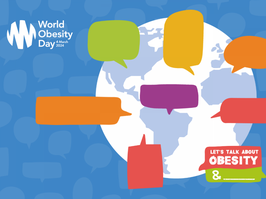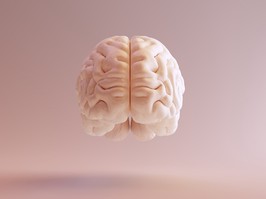eating disorder awareness week: finding the right support and giving yourself grace with an eating disorder
letting go of stigma and finding the right support is vital for people living with eating disorders.

there is no one-size-fits-all when it comes to eating disorder treatment and what works for one person may not work for another. that’s why it’s vital to assess what’s available to you and the support network you currently have.
getty images
the general public often sees an eating disorder as one thing—a person who does not eat and is significantly underweight. typically, the public view of eating disorders also shows that only one demographic—young, caucasian, affluent female—is affected.
however, eating disorders and the people they affect come in all shapes and sizes and from various backgrounds regardless of sex, age, racial and ethnic identity, sexual orientation, or socio-economic background.
roughly 2.7 million people in canada are affected by an eating disorder, with just over half of those affected being in the youth demographic.
the various types of eating disorders include:
- anorexia nervosa
- bulimia nervosa
- binge eating disorder,
- avoidance restrictive food intake disorder
- otherwise specified feeding and eating disorder
all types present unique challenges, and if they are not treated effectively, they can lead to severe health consequences.
emily donahue, community engagement facilitator and direct client support worker with the national eating disorder information centre (nedic), works to provide resources and support to those living with an eating disorder as well as spread awareness as to what an eating disorder actually is and who it can affect. she sees firsthand the misconceptions that can make it more difficult for people to seek help.
advertisement
“anyone can be affected and when we really focus on that narrative of, you need to have a certain body type or you need to be a certain race or certain gender to have an eating disorder, it limits folks in their ability to access support both because there’s a lot of stigma for those who don’t fit within that narrative but also because healthcare providers might be less likely to recognize symptoms or screen for symptoms,” she said.
since eating disorders can have severe and detrimental impacts on a person both physically and mentally, it’s crucial to be able to spot the signs of one to ensure adequate care.
“it starts with a strong preoccupation with food and body image. so, a person watching what they eat, they have really rigid food rules like, ‘i’m only allowed to eat x types of foods. i have to cut out y types of food. i’m only allowed to eat during certain times.’ or having a really strong preoccupation with their body, their shape, their weight,” she said. “excessive exercise behaviour, prioritizing exercise above and beyond other things that might be important in their life, like school or work or spending time with friends and family. i think those are some of the early warning signs that can kind of tip a person off.”
advertisement
she goes on to say that other signs will be apparent as well, such as seeming off or unlike themselves, feeling exhausted all the time, or feeling depression or anxious around meals. there is also a level of internal shame, blame, or guilt surrounding an eating disorder, making it difficult for people to reach out for help even if they know that something is wrong—especially in a culture that looks at wellness activities as high-value.
“we do live in a culture that really values wellness and fitness and i think it’s insidious in this way in that diet culture is a significant risk factor for disordered eating and eating disorders,” said donahue. “that sort of rigid and really structured way of eating or exercise, these symptoms can be hard to spot for a lot of people, thinking both for themselves, like, ‘this is normal, this is a health promoting behaviour’ or for the people around them.”
being hard to spot and coming with a stigma makes seeking out treatment for eating disorders challenging, but when people do finally get a diagnosis and are unaware of what’s next, knowing how to navigate uncharted territories can drastically improve a person’s ability to access proper treatment that works for them.
advertisement
finding the right treatment and support
there is no one-size-fits-all when it comes to eating disorder treatment and what works for one person may not work for another. that’s why it’s vital to assess what’s available to you and the support network you currently have. from there, you can make any necessary changes to get on the right path.
“there are a couple of ways that folks can go about getting support or treatment in canada. one being through publicly funded hospital-based treatment programs. there are many programs across canada that offer. provincially funded care, both inpatient, sort of stay at the hospital or at an outpatient setting where folks can receive care from a multidisciplinary team working with a therapist, dietitian, sometimes physicians, psychiatrists, as well as in a group setting,” said donahue.
she continues, “there’s also private treatment and support, so working with a therapist or dietician in the community to explore concerns around eating, body image, and movement challenges.”
there are also peer support groups, online and virtual care options, and helplines, such as the nedic’s.
since everyone with an eating disorder is unique, their treatment will require a unique approach as well. for example, one person may benefit from an outpatient setting, whereas another would be better suited for inpatient monitoring. it depends highly on a case-by-case basis.
advertisement
she also notes that “everyone’s journey is going to be different”, so if one treatment or support system isn’t working for you, finding something that will is vital.
“take a look at the supports that already exist around you to see what you already have in place for yourself. do you have a supportive family member that you can talk to, or a friend or a partner? do you have a really great doctor that you feel comfortable and that you trust to share this with?” said donahue. “identifying the supports you already have in place can be comforting in a sense and resilience building. from there, it’s also important to identify gaps. what needs are my current supports not meeting and how can i fill those things?”
understanding and overcoming barriers
barriers to care for eating disorders can make finding the proper treatment exceptionally challenging. there are hospital wait lists for publicly funded programs, and many people do not have a family physician to turn to for referrals when they require support. access to health benefits is also a significant barrier, along with the affordability of private care, which is often available quicker but with a cost that not everyone can manage.
“there are certain barriers, that as an individual, it’s a little bit tricky to tackle those things on your own,” said donahue.
advertisement
she mentions that some cannot be addressed, such as getting your name higher up on a hospital wait list or finding the money to pay for private care when you don’t have insurance. but there are ways around those barriers.
“for example, if you’re on a wait list and you need support now, maybe you don’t have the financial resources to work with the therapist who say doesn’t have a wait list, let’s explore peer support. if you’re in a community that’s a little bit more remote and you don’t have a hospital in your area that offers treatment, let’s look for something virtual,” said donahue. “there are lots of doors that people can explore, and so if you’re facing a barrier at one door and it’s not opening for you, let’s go back and explore some of the other paths because the more options a person has, the less likely they are going to slip through the cracks.”
drawing on resources
along with finding treatment, establishing a wealth of resources is vital to help people get through the day-to-day that occurs between appointments or treatment sessions with therapists, dieticians, and others who are part of their medical team.
the nedic works to provide resources, such as a directory of providers that can be searched by geographical area to help people find the help they need as close as possible to home. they also have a helpline to call or live chat sessions that provide in-the-moment support.
advertisement
body peace, another canadian organization, provides free peer support groups for people over the age of 17 living with an eating disorder as well, and they do not require a referral or a diagnosis to attend.
sheena’s place, another community group in ontario, also provides local support groups for adults. these are virtual as well, so can be joined regardless of where someone lives.
other support groups in canada that can help people living with eating disorders include:
donahue says it’s crucial for people to know that “there’s more than one way to get help,” so exploring every resource available is an excellent way to find what works for them.
“we hope to help people navigate what’s going to fit best for them,” she said.
giving yourself grace
the treatment for an eating disorder isn’t going to be “linear” and giving yourself grace during this period is a great way to avoid feelings of blame, shame, or guilt that can hinder your ability to heal.
“if you’re ever feeling discouraged or you’re noticing backsliding or you’ve made some progress and then think things feel like they’re getting a little bit worse, i’d say that’s totally a normal part of the journey,” said donahue. “it’s okay. i think when we can acknowledge that relapse or that backsliding or falling back into old habits as a normal part of the journey, it can help people reframe not from a person failure or a point of something to be ashamed about, but more as an opportunity to reflect on what’s working and what’s not.”
advertisement
she goes on to say that it’s not the person’s fault if they don’t succeed in healing from an eating disorder right away or if their progress stalls at some points because all that means is that the right supports aren’t yet in place.
“it’s not your fault. let’s use this as an opportunity to reflect and assess where we can add additional supports,” she said.
eating disorder awareness week is from february 1-7, 2025. for more information visit the national eating disorder information centre (nedic).
 8 minute read
8 minute read





